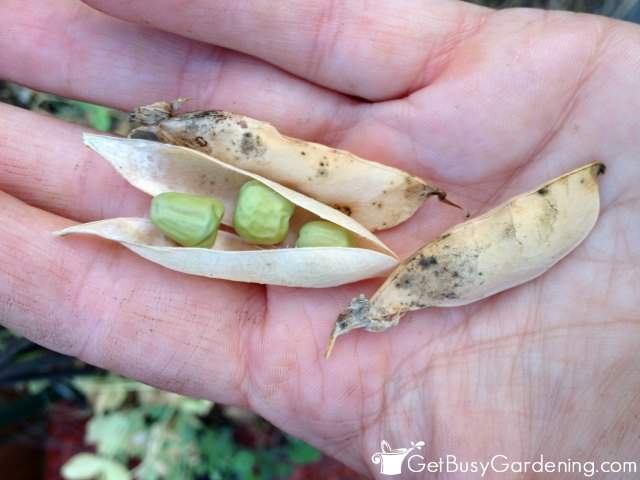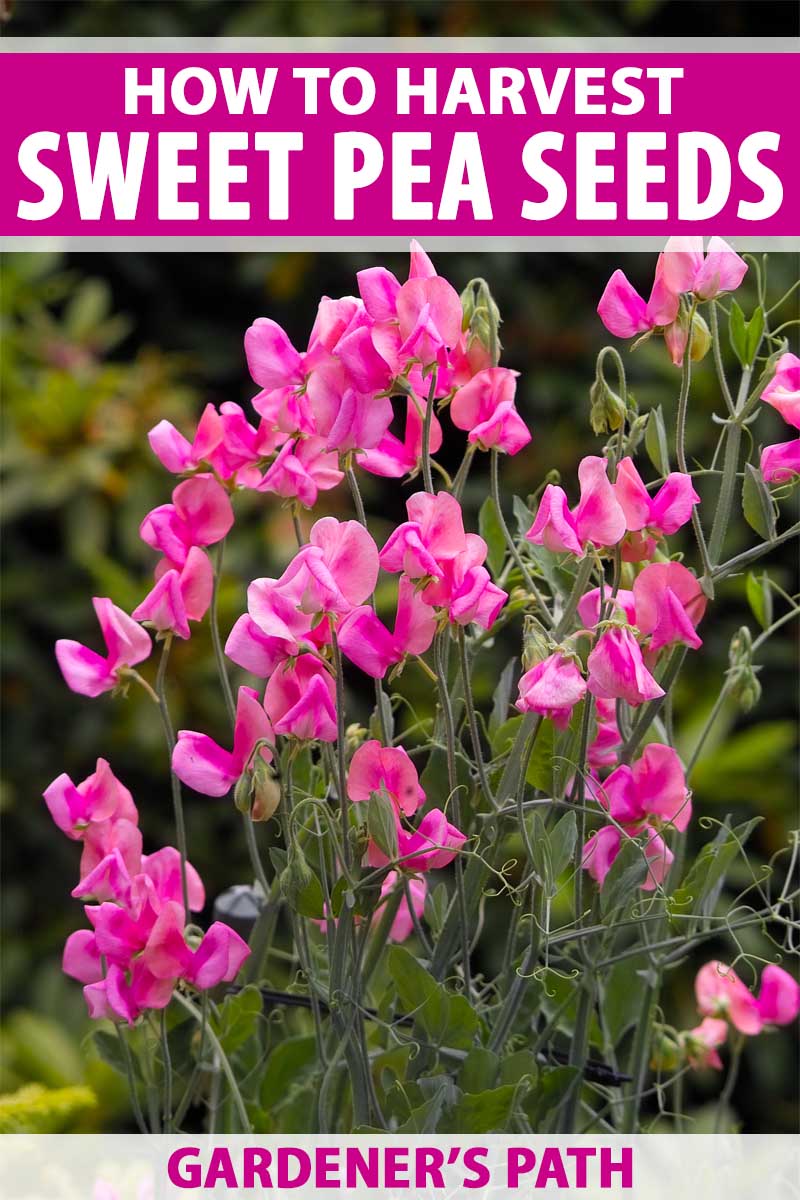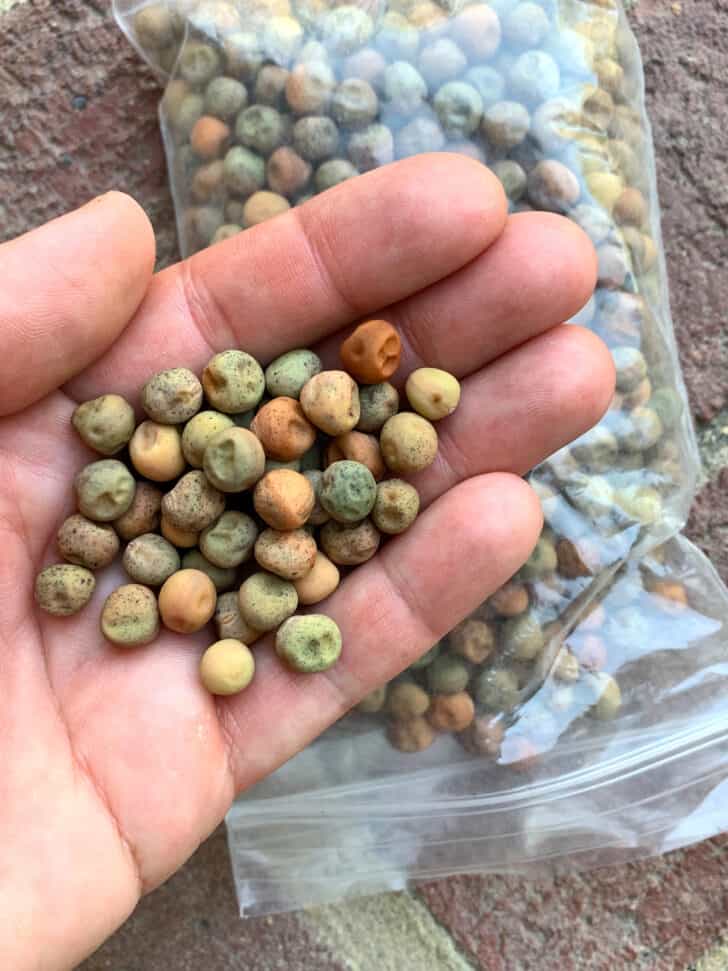Are you ready to save money and grow your own peas year after year? Knowing how to harvest peas for seed is a simple skill that can make a big difference in your garden.
When you learn the right timing and technique, you’ll get healthy seeds that will produce strong plants next season. You’ll discover how to harvest peas for seed, dry, and store your pea seeds so they stay fresh and ready to grow. Keep reading, and you’ll soon be enjoying the satisfaction of planting peas you’ve saved yourself.
Choosing The Right Pea Varieties
Choosing the right pea varieties is key to saving seeds successfully. Some peas grow better for seed saving than others. Picking the right type helps keep the plants healthy and productive year after year. It also ensures seeds will grow true to type in the next season.
Heirloom Vs Hybrid Seeds
Heirloom peas come from open-pollinated plants. Their seeds can be saved and will grow plants like the parent. This makes heirloom peas ideal for seed saving. Hybrid peas are crosses between two different plants. Their seeds often do not grow true to the parent plant. Hybrid peas may produce weak or different plants if saved for seed.
Best Varieties For Seed Saving
Choose varieties known for strong seed production. Sugar snap peas and shelling peas often produce good seeds. Look for varieties labeled open-pollinated or heirloom. These types keep their traits after saving seeds. Avoid hybrid varieties for seed saving. Popular heirloom varieties include ‘Sugar Ann,’ ‘Little Marvel,’ and ‘Green Arrow.’

Credit: getbusygardening.com
Timing The Harvest
Timing the harvest is key to saving good pea seeds. Harvest too early, and seeds will be weak or immature. Harvest too late, and seeds may fall or get damaged. Knowing the right moment helps keep seeds healthy and ready to plant next season.
Watch your pea plants closely. Look for clear signs to decide when to pick pods. Weather also plays a big role in timing. Picking peas on the right day protects seed quality and boosts your chances for a strong crop.
Signs Of Mature Pea Pods
Mature pea pods turn from bright green to a duller shade. Pods feel firm but not hard when pressed gently. Seeds inside grow full and round. You can hear a slight rattle when shaking the pod. Avoid pods that look soft or shriveled. These are not ready for seed saving.
Ideal Weather Conditions For Harvest
Harvest peas on a dry, sunny day. Moisture from rain or dew can cause mold or rot. Cool mornings are best to avoid heat stress on plants. Avoid harvesting in strong winds or storms. Dry weather keeps seeds in good condition for storage.
Harvesting Techniques
Harvesting peas for seed requires care and attention to keep seeds healthy and viable. Proper harvesting techniques ensure good seed quality and future plant growth. Timing and method play key roles in the success of seed harvesting.
Handpicking Methods
Handpicking peas is the most common way to harvest seeds. Pick pods only when they are dry and brown. Avoid green or soft pods. Dry pods contain mature seeds ready for planting.
Use gentle fingers to avoid damaging pods. Pick each pod carefully from the vine. Handle pods softly to prevent seed loss. Collect pods in a basket or container that allows air flow. This helps keep seeds dry and fresh.
Tools To Use For Harvesting
Simple tools help speed up harvesting without harming peas. Small garden scissors or pruning shears work well. Cut pods cleanly from vines to avoid damage.
Use gloves to protect hands from scratches. A small bucket or basket helps carry pods easily. Avoid plastic bags, which trap moisture and cause mold. Choose breathable containers for better seed drying.

Credit: gardenerspath.com
Drying And Preparing Seeds
Drying and preparing pea seeds is a vital step for saving seeds that grow strong plants next season. Proper drying stops mold and keeps seeds healthy. Preparing seeds carefully improves their storage life and germination rate. Follow these steps to clean and dry your pea seeds correctly.
Cleaning Pea Seeds
First, remove peas from the pods. Do this gently to avoid damage. Spread seeds on a clean surface. Check for damaged or shriveled seeds and discard them. Remove any plant debris or dirt. Clean seeds ensure better drying and storage. Clean seeds also prevent disease in the next crop.
Proper Drying Methods
Place seeds in a single layer on a paper towel or screen. Keep them in a warm, dry spot with good air flow. Avoid direct sunlight to prevent seed damage. Turn seeds daily to dry evenly. Let seeds dry for two to three weeks. Seeds are ready when they snap instead of bend. Store dried seeds in a cool, dark place in an airtight container.
Storing Pea Seeds
Storing pea seeds properly keeps them healthy and ready for planting. Good storage helps seeds last longer and grow well next season. Avoid moisture and heat to keep seeds fresh. Follow simple steps to protect your pea seeds after harvest.
Choosing Storage Containers
Use containers that keep seeds dry and safe. Glass jars with tight lids work well. Plastic containers can be used if airtight. Paper envelopes are not good for long storage. Avoid containers that let air or moisture in. Label each container with seed type and date.
Optimal Storage Conditions
Store seeds in a cool, dark place. Ideal temperature is between 32°F and 41°F (0°C to 5°C). Avoid places with high humidity to stop mold growth. A basement or refrigerator works well. Keep seeds away from sunlight and heat sources. Check seeds occasionally for signs of damage or moisture.

Credit: www.daringgourmet.com
Ensuring Seed Viability
Ensuring seed viability is key to growing strong pea plants. Seeds must stay healthy and able to sprout. This helps gardeners save money and enjoy fresh peas year after year.
Good seed viability means seeds will grow quickly and well. Proper care during harvest and storage keeps seeds strong. Without this, seeds might not sprout or produce weak plants.
Testing Germination Rates
Check seed germination before planting. Place 10 seeds on a wet paper towel. Keep the towel warm and moist. Count how many seeds sprout in one week.
If 7 or more seeds sprout, the batch is good. Less than that means seeds may be old or damaged. Testing saves time and effort in the garden.
Maintaining Seed Quality Over Time
Store seeds in a cool, dry place. Use airtight containers to keep out moisture. Label containers with the seed type and harvest date.
Avoid heat and sunlight to prevent seed damage. Keep seeds away from strong odors. Check seeds yearly and test germination before planting.
Common Mistakes To Avoid
Harvesting peas for seed requires care and attention. Many gardeners make mistakes that reduce seed quality. Avoiding these errors helps ensure strong, healthy plants next season. Below are common mistakes to watch out for.
Harvesting Too Early Or Late
Picking peas too early means seeds are not fully developed. These seeds often fail to sprout or produce weak plants. Waiting too long causes seeds to dry out and lose vitality. Check pods regularly. Harvest when pods turn brown but before they start to split open.
Improper Drying And Storage
Seeds must be dry before storage to prevent mold. Leaving seeds in damp pods invites rot and damage. Spread seeds in a single layer in a cool, dry place. Avoid direct sunlight and moisture. Store seeds in airtight containers for best results. Proper storage keeps seeds viable for a longer time.
Frequently Asked Questions
When Is The Best Time To Harvest Peas For Seed?
Harvest peas for seed when pods dry and turn brown. This signals full maturity and seed readiness. Timely harvest ensures viable seeds for next planting season.
How Do You Dry Peas Properly For Seed Saving?
Allow pea pods to dry on the plant or pick and air-dry in a warm, ventilated area. Avoid moisture to prevent mold and seed rot.
Can You Save Seeds From Any Pea Variety?
Yes, but save seeds only from open-pollinated or heirloom varieties. Hybrid seeds may not produce true-to-type plants next season.
How To Store Harvested Pea Seeds For Planting?
Store dried seeds in airtight containers in a cool, dark place. Proper storage maintains seed viability for up to three years.
Conclusion
Harvesting peas for seed takes time and care. Wait until pods turn dry and brown. Pick pods gently to avoid seed damage. Store seeds in a cool, dry place. Label seeds with the harvest date. Plant seeds next season for fresh peas.
Healthy seeds lead to strong plants. Enjoy growing peas year after year. Simple steps bring great rewards in your garden.

